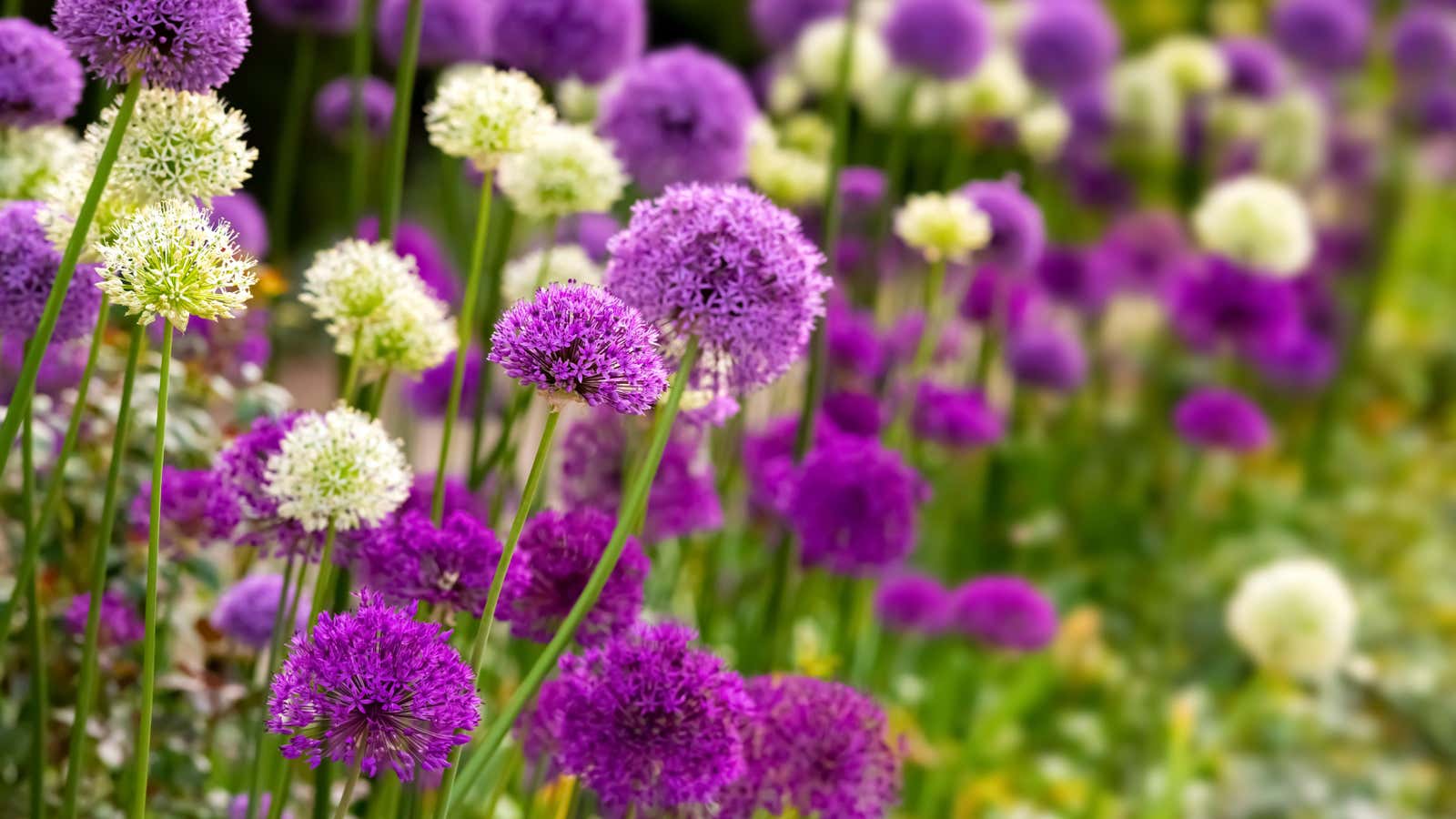How to Grow an Edible Flower Garden

Planning your garden can be a daunting task when it comes to weighing both form and function, but you don’t have to choose between a flower garden and an edible garden. You can get the best of both worlds by planting an edible flower garden that is perfect for adding vibrant colors to your plate as well as your yard.
There are many edible plants that have flowers and can be planted in garden beds with little effort. In addition to cultivated flowers, which you can grow from seeds or plants, it’s also worth researching local native varieties of edible flowers because they’re good for pollinators and local wildlife. (You can find local native wildflowers with this tool from the National Wildlife Fund or through your local horticultural society or park department.)
Why you should plant onions in your edible garden
While it may not seem like an obvious choice, onions and their relatives, which you would normally only grow in your garden, actually have beautiful, edible flowers. Plants in the onion family have edible flowers in a variety of heights and colors, making them a good choice for an edible garden.
For example, green onions grow purple tufted flowers that are both edible and help deter aphids from eating your greens. You can also try the wild onion , which is also great for repelling aphids and comes in several varieties. Other related plants with fine edible flowers include wild garlic , shin onion, and Persian blue onion .
Why You Should Plant Herbs in Your Edible Garden
Some plants traditionally grown for their leaves, such as herbs, also have edible flowers that can add flavor and color to your plate. Dill , for example, can be planted in a flower garden and eaten for its tiny yellow flowers as well as lacy leaves. Other herbs with edible flowers include anise hyssop , mint , and chamomile .
Many of the herbs that are traditionally grown for their leaves also have edible flowers, so they are a great choice for an edible flower garden. In addition to their appearance and taste, many herbs exude a pleasant aroma, which is an added bonus.
Planting decorative flowers that are edible
Some plants not traditionally grown for food also have edible flowers. These include marigolds , which also act as a pest deterrent and are great for attracting pollinators. Other varieties of ornamental flowers you can eat include nasturtiums , pansies , and lilacs . Mixing taller varieties like lilac or allium with lower flowers like pansies will create depth and give your garden many beautiful layers.
Benefits of kits and mixes
If you’re not quite ready to pick flowers by hand, you can purchase an edible flower seed kit or an edible flower growing kit. Mixtures of edible wildflowers are also available, but for best results, make sure you get flowers native to your area.
Be careful when buying mixes if you are looking for a wide variety of colors, as some pre-blended seeds contain many seeds of the same type or are made from trash and can be contaminated with other seeds. Getting edible flower seeds from a source that can tell you their germination rate and seed content is a good way to make sure you’re getting a quality product.